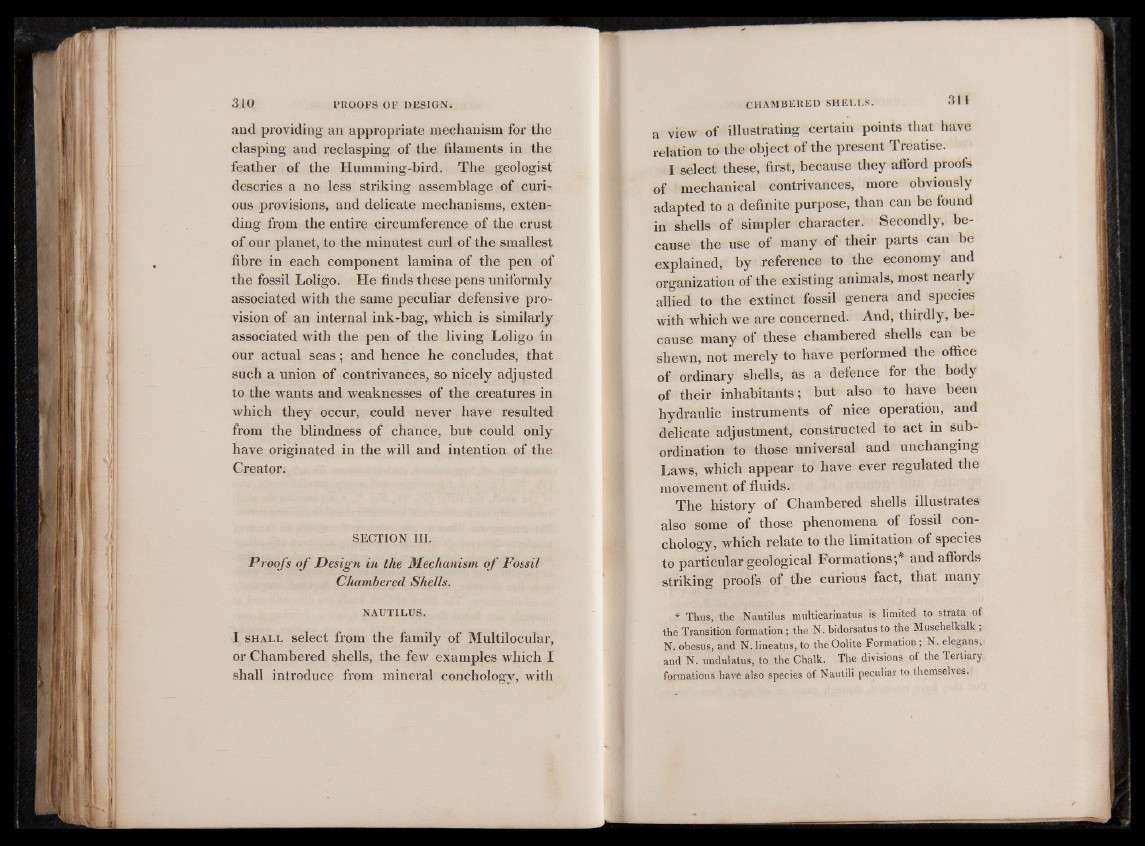
and providing an appropriate mechanism for the
clasping and reclasping of the filaments in the
feather of the Humming-bird. The geologist
descries a no less striking assemblage of curious
provisions, and delicate mechanisms, extending
from the entire circumference of the crust
of our planet, to the minutest curl of the smallest
fibre in each component lamina of the pen of
the fossil Loligo. He finds these pens uniformly
associated with the same peculiar defensive provision
of an internal ink-bag, which is similarly
associated with the pen of the living Loligo in
our actual seas; and hence he concludes, that
such a union of contrivances, so nicely adjusted
to the wants and weaknesses of the creatures in
which they occur, could never have resulted
from the blindness of chance, but could only
have originated in the will and intention of the
Creator.
SECTION III.
Proofs o f Design in the Mechanism o f Fossil
Chambered Shells.
NAUTILUS.
I s h a l l select from the family of Multilocular,
or Chambered shells, the few examples which I
shall introduce from mineral conchology, with
a view of illustrating certain points that have
relation to the object of the present Treatise.
I select these, first, because they afford proofs
of mechanical contrivances, more obviously
adapted to a definite purpose, than can be found
in shells of simpler character. Secondly, because
the use of many of their parts can be
explained, by reference to the economy and
organization of the existing animals, most nearly
allied to the extinct fossil genera and species
with which we are concerned. And, thirdly, because
many of these chambered shells can be
shewn, not merely to have performed the office
of ordinary shells, as a defence for the body
of their inhabitants; but also to have been
hydraulic instruments of nice operation, and
delicate adjustment, constructed to act in subordination
to those universal and unchanging
Laws, which appear to have ever regulated the
movement of fluids.
The history of Chambered shells illustrates
also some of those phenomena of fossil conchology,
which relate to the limitation of species
to particular geological Formations;* and affords
striking proofs of the curious fact, that many
* Thus, the Nautilus multicarinatus is limited to strata of
the Transition formation ; the N. bidorsatus to the Muschelkalk ,
N. obesus, and N. lineatus, to the Oolite Formation ; N. elegans,
and N. undulatus, to the Chalk. The divisions of the Tertiary
formations have also species of Nautili peculiar to themselves.